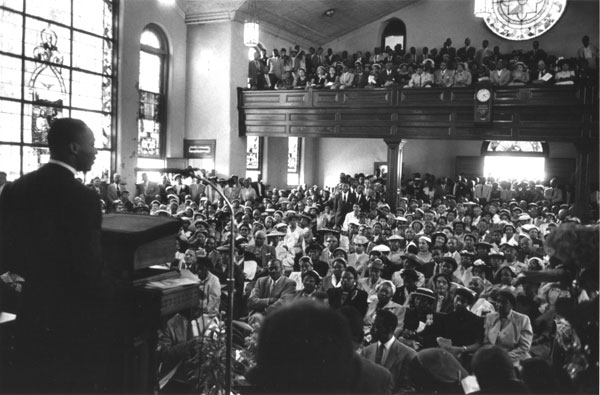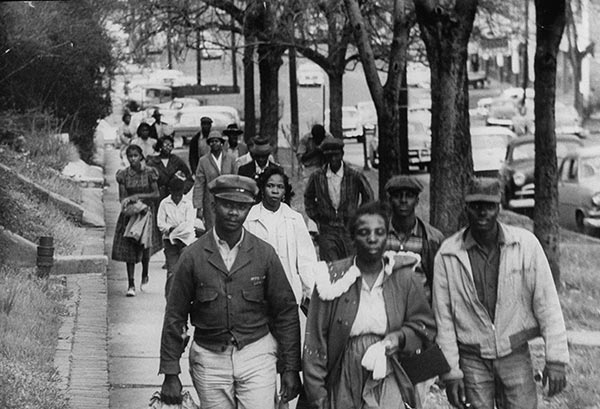SECTION 03
Montgomery Bus Boycott
In an atmosphere of racial terror where the injustice of the political system was always blatant, black activists throughout the South were struggling against the inequality of segregation. On December 1, 1955, Rosa Parks refused to relinquish her seat to a white man while riding on a segregated bus in Montgomery, Alabama. Although the media portrayed Parks as a tired woman without ties to a larger freedom struggle, she was, in fact, a seasoned activist who had been a youth leader in the NAACP and had received training in activism at the Highlander Center. Moreover, the stand Parks took that day was part of a long planned protest led by E. D. Nixon, a local community and Pullman Car Porter union leader, and the Women's Political Council led by Jo Ann Robinson.
Over a year earlier, the group had started planning a means through which to address segregation in Montgomery. After deciding to attack the city's outrageous segregation on public transportation, where black patrons were forced to sit in the back of the bus or stand when a white patron had no seat, they devised a test case to see how the city would respond. After Mrs. Parks was arrested that December 1, 1955, an outraged Nixon urged the African American community to stage a one-day boycott of the Montgomery buses. On Monday, December 5, over 95 percent of all blacks refused to ride the buses. That night 6,000 black people gathered at Montgomery's Holt Street Baptist Church and reached a consensus to continue the nonviolent protest indefinitely.
Martin Luther King, Jr. speaking in church during the Montgomery bus boycott.
Source: Dan Weiner, courtesy of Sandra Weiner.
A black coalition of ministers and community members at the meeting formed the Montgomery Improvement Association. At Nixon's suggestion, the members selected a young, little-known Baptist minister, Dr. Martin Luther King Jr., as their chief spokesperson. An estimated 50,000 African Americans boycotted the Montgomery buses during the year-long protest until, on November 13, 1956, the U.S. Supreme Court ruled in favor of the boycott and struck down the city's segregation ordinance for public transportation. The modern black freedom movement had achieved a decisive victory.
Related Resources
Walking to work, 1956.
Thousands of black commuters are shown walking long distances to work instead of riding the buses during the Montgomery bus boycott, 1956.
Source: Don Cravens/Time Life/Getty Images.
Rosa Parks: In Her Own Words.
Rosa Parks, at 82 years old, talks about her refusal to give up her seat on a bus to white passengers. Source: NBC News/iCue.





